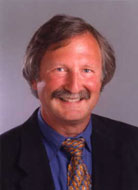 For over a decade, research by Jacob Teitelbaum M.D. author of the best-selling book "From Fatigued to Fantastic!"1 has shown that hypothyroidism, like most other illnesses that affect predominantly women, has been dramatically under diagnosed.2 3 The American Academy of Clinical Endocrinologists (AACE), the nation's largest organization of thyroid specialists, has now confirmed this. After a recent meeting, the normal range for thyroid tests was dramatically narrowed. As noted in the AACE press release:
For over a decade, research by Jacob Teitelbaum M.D. author of the best-selling book "From Fatigued to Fantastic!"1 has shown that hypothyroidism, like most other illnesses that affect predominantly women, has been dramatically under diagnosed.2 3 The American Academy of Clinical Endocrinologists (AACE), the nation's largest organization of thyroid specialists, has now confirmed this. After a recent meeting, the normal range for thyroid tests was dramatically narrowed. As noted in the AACE press release:
"Until November 2002, doctors had relied on a normal TSH level ranging from 0.5 to 5.0 to diagnose and treat patients with a thyroid disorder who tested outside the boundaries of that range. Now AACE encourages doctors to consider treatment for patients who test outside the boundaries of a narrower margin based on a target TSH level of 0.3 to 3.0. AACE believes the new range will result in proper diagnosis for millions of Americans who suffer from a mild thyroid disorder, but have gone untreated until now."
"The prevalence of undiagnosed thyroid disease in the United States is shockingly high - particularly since it is a condition that is easy to diagnose and treat," said Hossein Gharib, MD, FACE, and president of AACE. "The new TSH range from the AACE guidelines gives physicians the information they need to diagnose mild thyroid disease before it can lead to more serious effects on a patient's health - such as elevated cholesterol, heart disease, osteoporosis, infertility, and depression."4
Now, 6 months after the new directives have been given, doctors are still largely unaware of these new lab guidelines for diagnosis and treatment. Even the major labs doing thyroid testing have not bothered to change the now incorrect normal ranges for both diagnosis and treatment of thyroid disorders.
The normal range for thyroid hormone levels in the past have been based on statistical norms (called 2 standard deviations). This means that out of every 100 people, those with the 2 highest and lowest scores are considered abnormal and everyone else is defined as normal. That means if a problem affects over 2% of the population( and as many as 24% of women over 60 are hypothyroid5 and 12% of the population have abnormal antibodies attacking their thyroid6 ), then our testing system will still miss most of them. In addition, our testing system does not take biological individuality into account. To translate how poorly this "2%" system works, consider this. If we applied it to getting you a pair of shoes, any size between a 4 and 13 would be "medically normal." If a man got a size 5 shoe or a woman a size 12, the doctor would say the shoe size they were given is "normal" and there is nothing wrong with it!
This increased the number of Americans with Thyroid illness from 13 million to approximately 27 million. Unfortunately, over 13 million Americans with thyroid disease remains undiagnosed4, and the majority of those receiving treatment are not being dosed appropriately5 6. Doctors do not know that they have not been adequately trained in the proper diagnosis or treatment of hypothyroidism, and the cost in human life and devastating illness is enormous. What makes this especially tragic is how easy treatment is if doctors were given the correct information. Even the major laboratories continue to give erroneous normal ranges for the tests, simply because they're not aware of the guidelines of the AACE or the information put out by their National Association of Clinical Biochemistry.